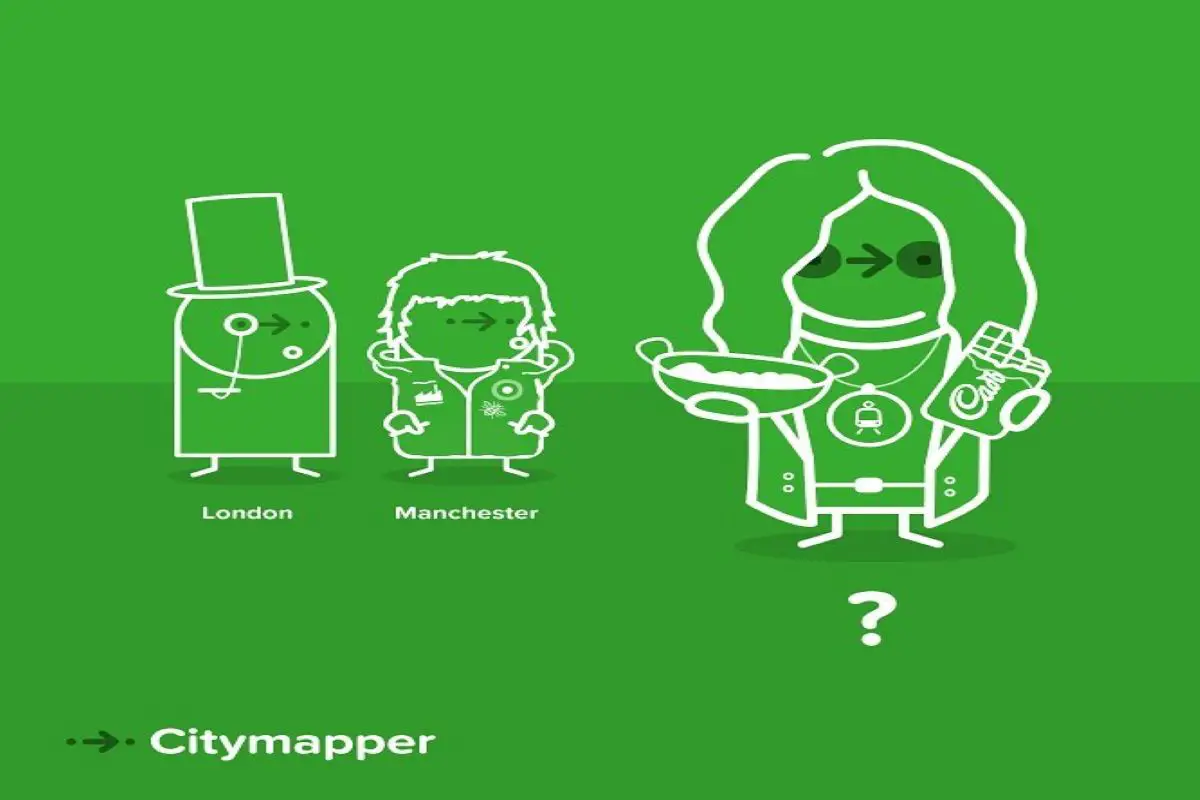If you’re anything like me, navigating a city is like learning a new language. I’m from a small “city” in the South, so I am much more accustomed to driving to get wherever I need to go. Because of that, trying to walk through crowded streets and navigate what seems like endless metro lines is extremely difficult for me. So, after getting advice to download Citymapper from a few people who are accustomed to big cities, I decided to give it a try.
Citymapper is available for free online and as an application for iPhone and Android users. In the App Store, Citymapper claims to take “the hassle out of getting around” by providing “multiple route options,” “reliable estimates for travel time” and “creative combinations” for getting to your destination. Additionally, it also provides a “trip receipt” that shows you an estimate of how many calories were burned through any walking done on your trip.
When I first heard of Citymapper, I didn’t quite understand how it could be much different from the pre-downloaded Maps app on my iPhone or Google Maps. Both give me the option for public transportation and walking — isn’t that good enough? As it turns out, it’s not. After waiting for a bus for an hour (even though Apple Maps said it would arrive in 10 minutes), I finally caved and downloaded the Citymapper app.
The Features
Immediately upon opening the app, I was impressed. The top third of the screen shows a map of your current location and surrounding streets with icons that represent bus stops and metro stations. Below, you will find icons you can press to reveal a wider, general map or maps that specifically show nearby busses and metro lines and even areas where you can find bikes and scooters for rent.
Citymapper also has the option to input your home and work address to make daily commutes even easier. All these features definitely give the app a leg-up from Apple and Google Maps.
Once you input a destination, the app brings you to a page that gives you estimated times for walking, bike rentals and ride-sharing services. Below, it provides five suggested options via public transportation, including a mix of metro lines and bus routes, with time estimates next to each option.
Even farther down the page are more alternative rental and ride-sharing services, as well as other metro and bus routes with higher commute times than the suggested lines of transportation.
https://www.instagram.com/p/BXTM4dDgIP7/?utm_source=ig_web_copy_link
But It’s Not Always Accurate
After seeing all the different options laid out in front of me, I was really excited to try Citymapper. Maps typically only gives me one or two options for public transportation, and I was happy to learn there are so many ways to get places. So, I decided to test Citymapper when going on a tour of a palace with my study abroad program. We were all told to be punctual, so I was sure to choose the metro option with the quickest commute time: 25 minutes.
I had to take two different metro lines, but I wasn’t worried about the extra time it might take to wait for each train because the Citymapper app provides the arrival times of the next five trains, and all were only a few minutes apart. Boy was I angry once I realized the arrival times were incorrect.
Instead of the train arriving in two minutes for my second train, as shown in the app, I actually had to wait 12 minutes. Additionally, the time on the metro ended up taking much longer than what Citymapper estimated, so what was supposed to be a 25-minute commute ended up taking me 50 minutes, making me late for my tour.
I was pretty angry that my estimated commute time was so inaccurate. However, it was my first time using the Citymapper app, and I thought the discrepancy might have been due to the metro line itself rather than the app. So, I decided to try it again when I was meeting a friend for brunch one morning. Nevertheless, my trip still took about 10 minutes longer than Citymapper predicted.
Redeeming Qualities
Although Citymapper doesn’t earn an A-plus in timing, it does have some features that make it worth the switch from your usual navigation source. For instance, although the app does not reveal how these stats are calculated, it offers a feature called Trip Stats that gives an estimated number of calories burned from time spent walking, how many trees you’ve saved using these modes of transportation and how much money you saved.
So, even though I had to spend a long time waiting, I get to see what benefits public transportation or walking have on my health, the environment and my finances. Seeing these stats definitely makes taking the metro seem a lot more appealing.
https://www.instagram.com/p/BcKI–8A5Xm/?utm_source=ig_web_copy_link
Trip Stats also shows how much time you spent waiting, walking and riding per trip, which can be helpful for future reference when trying to decide which route to take.
Bottom Line…
So, is Citymapper worth taking up extra storage on your device? It depends. I will definitely continue to use it when I am in major cities that require navigating public transportation systems. However, because I live in a small town, I will likely delete it to free up storage on my phone for the majority of the time.
Although Citymapper did make me late a few times, I do think it can be really helpful because it offers so many options and alternative routes for commuting from one place to the next, and as a non-city girl, I find this feature extremely helpful, and I definitely recommend it to anyone vacationing or moving to a new city. And if you want to create an app or a map that you can use in your business or website, try a free geocoding API that will help you convert data such as addresses into coordinates.
https://www.instagram.com/p/BYOTMWEAkB_/?utm_source=ig_web_copy_link
It’s certainly not perfect, but it is far superior to Apple and Google Maps. Even city-slickers could benefit from Citymapper by learning new ways of traveling that deviate from their usual routes.
















